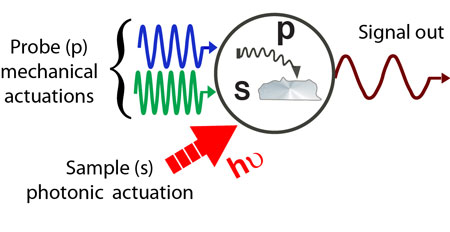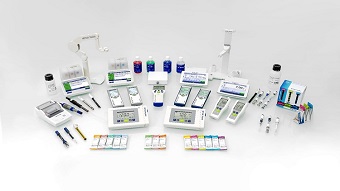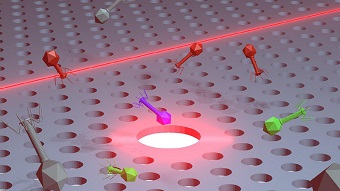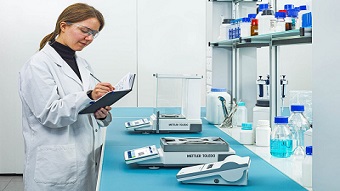Microscope Offers Platform to Observe Chemical and Physical Properties
Engineering360 News Desk | August 17, 2015A microscope being developed at the U.S. Department of Energy's Oak Ridge National Laboratory (DOE ORNL) will allow scientists studying biological and synthetic materials to simultaneously observe chemical and physical properties on and beneath the surface.
 A combination of carefully tuned mechanical and photonic excitations of the sample and probe allow for decoding of chemical and physical properties. Source: ORNLThe Hybrid Photonic Mode-Synthesizing Atomic Force Microscope combines the disciplines of nanospectroscopy and nanomechanical microscopy, says principal investigator Ali Passian of ORNL's Quantum Information System group.
A combination of carefully tuned mechanical and photonic excitations of the sample and probe allow for decoding of chemical and physical properties. Source: ORNLThe Hybrid Photonic Mode-Synthesizing Atomic Force Microscope combines the disciplines of nanospectroscopy and nanomechanical microscopy, says principal investigator Ali Passian of ORNL's Quantum Information System group.
"Our microscope offers a non-invasive rapid method to explore materials simultaneously for their chemical and physical properties," Passian says. "It allows researchers to study the surface and subsurface of synthetic and biological samples, which is a capability that until now didn't exist."
ORNL's instrument retains all of the advantages of an atomic force microscope while simultaneously offering the potential for discoveries through its high resolution and subsurface spectroscopic capabilities.
"The originality of the instrument and technique lies in its ability to provide information about a material's chemical composition in the broad infrared spectrum of the chemical composition while showing the morphology of a material's interior and exterior with nanoscale—a billionth of a meter—resolution," Passian says.
Researchers will be able to study samples ranging from engineered nanoparticles and nanostructures to naturally occurring biological polymers, tissues and plant cells.
The first application as part of DOE's BioEnergy Science Center was in the examination of plant cell walls under several treatments to provide submicron characterization. The plant cell wall is a layered nanostructure of biopolymers such as cellulose. Scientists want to convert such biopolymers to free the useful sugars and release energy.
An earlier instrument, also invented at ORNL, provided imaging of poplar cell wall structures that yielded unprecedented topological information, advancing fundamental research in sustainable biofuels. The research team envisions broad applications, thanks to the new instrument’s impressive capabilities.
Looking inside, the hybrid microscope consists of a photonic module that is incorporated into a mode-synthesizing atomic force microscope. The modular aspect of the system makes it possible to accommodate various radiation sources such as tunable lasers and non-coherent monochromatic or polychromatic sources.
News Articles:
Microscopic Rake Boosts Efficiency of Low-Cost Solar Cells
Oak Ridge Lab Teams with Hyundai on Automotive Research Projects
Molten Salt Reactor Firm Partners with Canadian and Oak Ridge Labs




